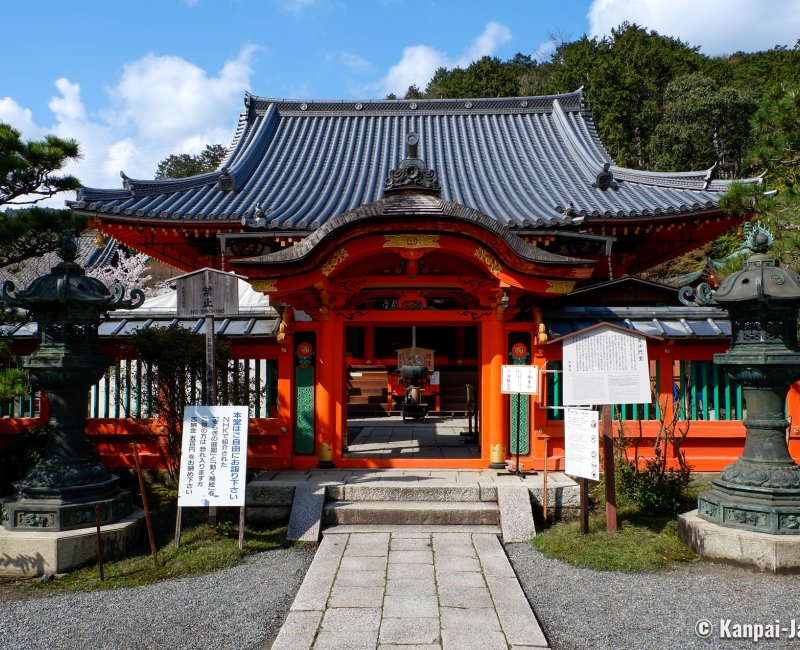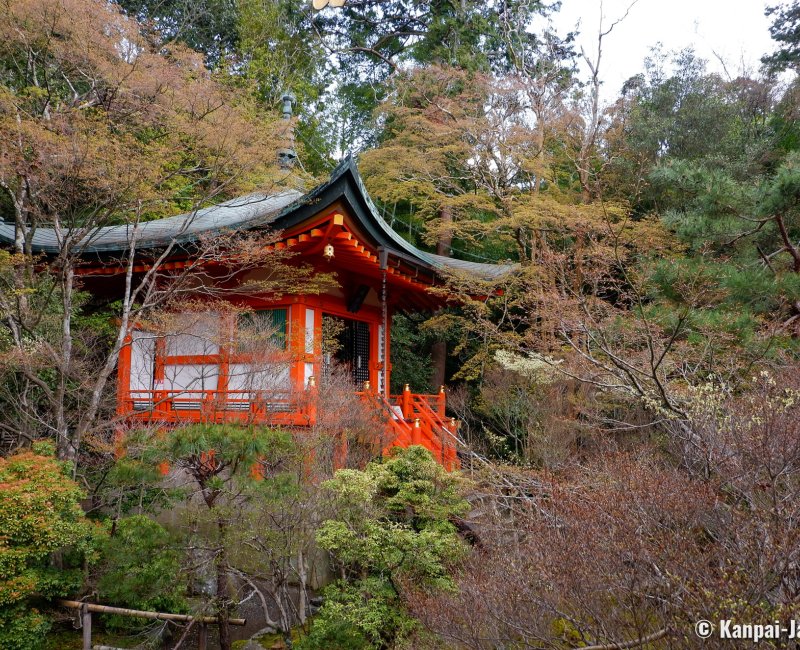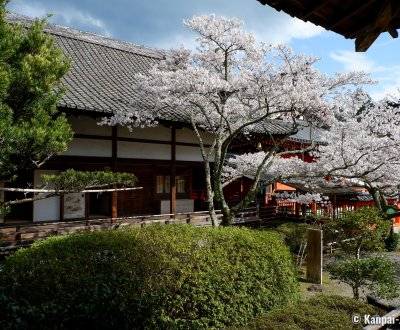Bishamon-do
Yamashina’s Monzeki Treasure in Kyoto
Bishamon-do is a Buddhist temple of the Tendai school located on the heights of Yamashina ward in the east of Kyoto. The grounds received the Monzeki labeled meaning they are used by the Japanese imperial family. Its beauty is first revealed in spring, then in autumn, with the reddening of the koyo maple foliage.
Founded in 703 by famous monk Gyoki (668 - 749), on the order of emperor Monmu (683 - 707), Bishamon-do was first established to the north of Kyoto Imperial Palace. It was however forsaken for a while and it was only at the beginning of the Edo period (1603 – 1868) that the temple was moved and rebuilt in Yamashina, at the initiative of monk Tenkai (1536 - 1643) of the Buddhist Tendai school and sponsored by the then ruling shogun Tokugawa Ieyasu (1543 - 1616).
Bishamon-do is one of the 5 Monzeki temples of the Tendai school in Kyoto, that is to say that they are a place where members of the imperial family or the nobility come to study Buddhism, for a spiritual retreat or to become monk. The name of the temple refers to Bishamonten, the main deity worshipped here and known as the Shi-Tenno guardian of the north and one of the Seven Lucky Gods in Japan.

A hike for spring and autumn
The temple’s entrance is located on a hill and within walking distance from:
- Yamashina JR station, a ~15 minutes’ walk through a lovely residential area along Lake Biwa Canal lined with blooming cherry trees in spring; or,
- Nanzen-ji temple, in a ~50 minutes’ walk on an about 3-kilometers long hiking trail through the forest mountain.
The outer grounds is wonderful in autumn at the momiji 🍁 season, when the vibrant maple foliage marvelously color the alleys and enhance the view on the vermilion Benzaiten pavilion. Beautiful sakura 🌸, and even weeping cherry trees, also enliven the temple’s main esplanade in spring.

Indoor visit of the temple and view on the garden
We recommend not to stop at the pavilions’ fronts but also to visit the inside of the following 3 big buildings:
- The main hall Honden, which is home to a wood statue of Bishamonten, the first worshipping item of the temple, as well as other sculptures, rows of red lanterns and a ceiling decorated with a phoenix;
- Reiden Pavilion (霊殿) and its image of Amida Nyorai Buddha protected by a large dragon painting on the ceiling by an artist of the Kano School. The pavilion was built in 1563 as a mausoleum at the imperial palace, and was moved to its current location in 1693;
- Shinden pavilion (宸殿), granted by emperor Go-sai, it preserves many items designated cultural assets, including 116 fusuma panels covered with traditional paintings. It also provides a view on Bansui-en garden (晩翠園) laid out around a pond during the Edo period.
Located off the beaten tracks of Kyoto center’s sightseeing tours, Bishamon-do temple is rather quiet all year long. It becomes more popular in November, with visitors who come to admire the red Japanese maple trees. It is particularly worth a visit at the changing of season and in summer to enjoy the cool shade of the surrounding forest.

